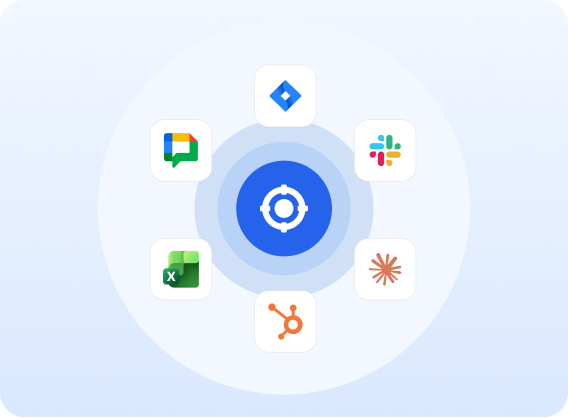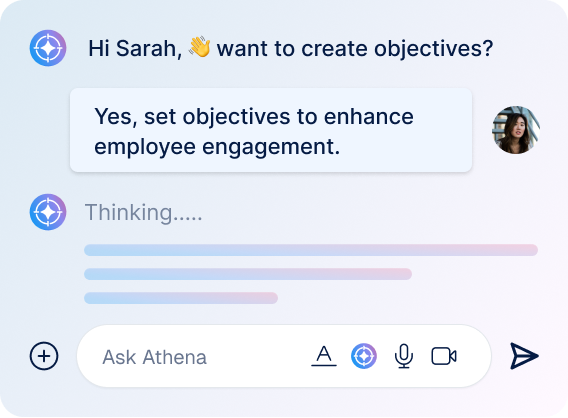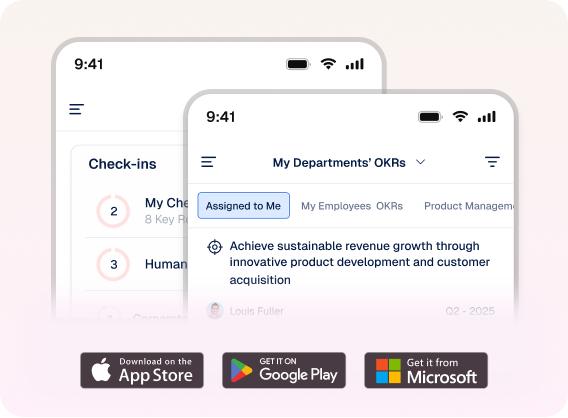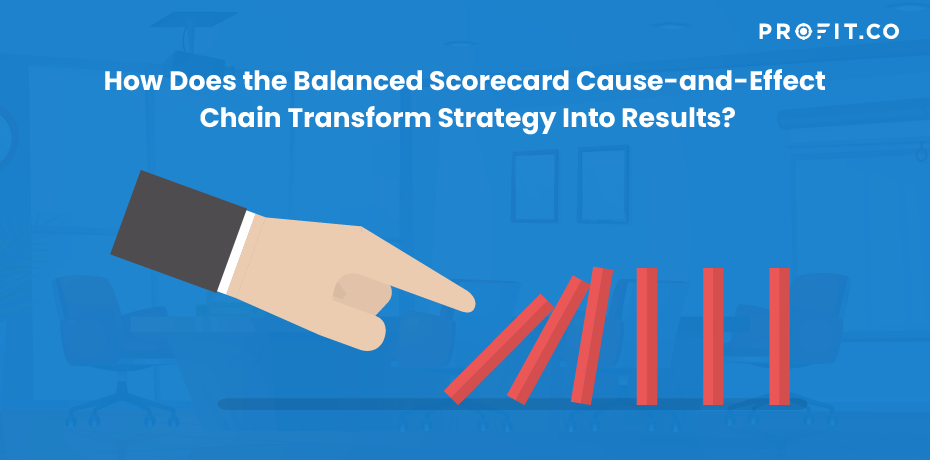TL;DR:
The Balanced Scorecard cause-and-effect chain is the strategic DNA that connects your organization’s capabilities to financial results. It flows from Learning & Growth investments → Internal Process improvements → Customer satisfaction → Financial performance. Understanding and mapping these connections helps leaders make smarter decisions and predict business outcomes. Let’s say you spend $50,000 on training. Six months later, profits haven’t changed, and you’re left guessing whether it helped or not. That’s because most organizations look at performance in silos. But strategy doesn’t work that way. Kaplan and Norton, the creators of the Balanced Scorecard, showed us something not only powerful, but also the fact that real business results are the outcome of connected actions. Investing in people improves processes. Better processes lead to happier customers. Happy customers drive financial growth. It’s a chain each link matters. The Balanced Scorecard helps you see this cause-and-effect clearly. Like a strategy map, it shows you how your actions today can shape your results tomorrow so you’re not just tracking metrics, you’re making them meaningful.The law of cause and effect: If you do what other successful people do, you will eventually get the results that other successful people get.
What Is the Cause-and-Effect Chain in Balance Scorecard?
The cause-and-effect chain is the backbone of the Balanced Scorecard framework. The idea is business success isn’t random. There’s a logical sequence that connects your investments in people and processes to your financial results.The cause-and-effect chain transforms strategic assumptions into testable hypotheses. Instead of hoping your initiatives work, you can predict and measure their impact.Tweet
The basic flow of connections that drives most successful businesses
Learning & Growth → Internal Processes → Customer → Financial
It’s a roadmap you can follow and measure.
The Links in the Balanced Scorecard That is Crucial For Business Success
1: Learning & Growth → Internal Processes
This is where transformation begins. When you invest in your people, technology, and organizational culture, magic starts happening in your operations. How are they connected?- Better-trained employees make fewer mistakes
- Improved systems reduce processing time
- Strong culture increases collaboration
- New technology enables innovation
We see an example of Zappos, which invested heavily in customer service training and company culture (Learning & Growth). This directly improved their order fulfillment speed and customer interaction quality (Internal Processes). Employees who felt valued and well-trained naturally delivered better service.
2: Internal Processes → Customer
When your internal operations improve, customers notice immediately, even if they don’t realize why.
How are they connected?
- Faster processes = quicker customer response
- Higher quality = fewer customer complaints
- Better innovation = products customers love
- Efficient operations = competitive pricing
Amazon’s investment in warehouse automation and logistics technology (Internal Processes) created faster delivery times and more accurate orders. Customers experienced this as exceptional service, leading to higher satisfaction and loyalty.
3: Customer → Financial
Happy, loyal customers are your best revenue generators. This link is often the most visible, but many businesses try to jump directly here without building the foundation.
How are they connected?
- Satisfied customers buy more frequently
- Loyal customers cost less to serve
- Happy customers refer others
- Retained customers have higher lifetime value
Starbucks focused on creating a “third place” experience between home and work. Their customer-centric approach led to higher average transaction values, more frequent visits, and strong brand loyalty, all directly impacting their financial performance.
The Complete Chain in Action
When all links work together, you create a powerful engine for sustainable growth. Let’s see how this looks in practice:
Southwest Airlines Example:- Learning & Growth: Invested in employee training and created a fun, supportive culture
- Internal Processes: This led to faster turnaround times, fewer delays, and better customer service
- Customer: Passengers experienced reliable, friendly service at low prices
- Financial: Higher customer loyalty and operational efficiency drove consistent profitability
Start your Profit.co trial today and build data-driven cause-and-effect chains that link every investment to bottom-line results.
How to Build Your Own Cause-and-Effect Chain
Step 1: Start With Your End Goal
Before mapping connections, be crystal clear about your financial objectives.
- Are you aiming for revenue growth, cost reduction, or improved profitability?
- What is the financial outcome we want?
- When do we need to achieve it in terms of timeline?
- How will we measure success?
Step 2: Work Backwards From Customer Impact
Ask yourself: “What must our customers experience to drive our financial goals?”
- Faster service delivery?
- Higher product quality?
- Better customer support?
- More innovative solutions?
- Competitive pricing?
Step 3: Identify Required Process Changes
Now ask: “What internal processes must improve to deliver that customer experience?”
- Product development speed?
- Order fulfillment accuracy?
- Customer service response time?
- Quality control measures?
- Cost management efficiency?
Step 4: Determine Learning & Growth Investments
Finally: “What capabilities do we need to build to enable those process improvements?”
- Employee training programs?
- New technology systems?
- Organizational restructuring?
- Culture change initiatives?
- Leadership development
Start small and test your assumptions. Build one strong link at a time rather than trying to transform everything simultaneously.Tweet
4 Common Cause-and-Effect Chain Breaking Mistakes
1: Skipping Links
Many leaders try to jump directly from Learning & Growth to Financial results. It’s like expecting to get fit by buying gym equipment without actually exercising. For example, a company invests in expensive CRM software but fails to train its employees properly. The technology sits unused, and customer relationships don’t improve
2: Weak Link Assumptions
Sometimes leaders assume connections exist without validating them and thinking that employee satisfaction automatically leads to customer satisfaction. While often true, this connection isn’t guaranteed without proper processes and accountability.
3: Ignoring Time Delays
Each link in the chain takes time to show results. Financial improvements often lag behind Learning & Growth investments by 6-18 months.
4: Measuring Only the Ends
Focusing solely on Learning & Growth inputs and Financial outputs while ignoring the middle links like Internal Processes and Customer is a fatal mistake..
Testing Your Cause-and-Effect Chain: The Hypothesis Method
Treat each link as a testable hypothesis:
Hypothesis Format: “If we improve [Learning & Growth element], then [Internal Process] will improve, leading to [Customer outcome], resulting in [Financial result].”
Example Hypothesis: “If we implement monthly sales training (Learning & Growth), then our sales team will improve their closing rate by 15% (Internal Process), leading to higher customer satisfaction with our sales experience (Customer), resulting in 20% revenue growth (Financial).”
Testing Steps:
- Define clear metrics for each link
- Set realistic timelines
- Track leading and lagging indicators
- Adjust based on results
- Map Your Current State: Identify your existing connections between the four perspectives
- Define Your Desired Future: What financial goals do you want to achieve?
- Build Your Hypothesis: Create if-then statements connecting your investments to results.
- Choose Key Metrics: Select 2-3 measures for each link in your chain
- Start Testing: Implement one chain and track results for 90 days
- Learn and Adjust: Refine your approach based on what works
Making It Work: Practical Implementation
Create Visual Strategy Maps
Draw your cause-and-effect chain visually. This helps everyone understand how their work connects to business results.
Establish Regular Reviews
Monthly check-ins help you spot broken links early and make corrections.
Communicate the Story
Help employees understand how their daily work contributes to the bigger picture. When people see the connection, they’re more engaged and effective.
Start Simple
Begin with one clear chain for your most important strategic objective. Master this before adding complexity.
The most successful organizations treat their cause-and-effect chain as a living document. They regularly test, refine, and update their strategic assumptions based on real results.Tweet
Your Next 6 Steps
Ready to build your cause-and-effect chain? Here’s your action plan:




